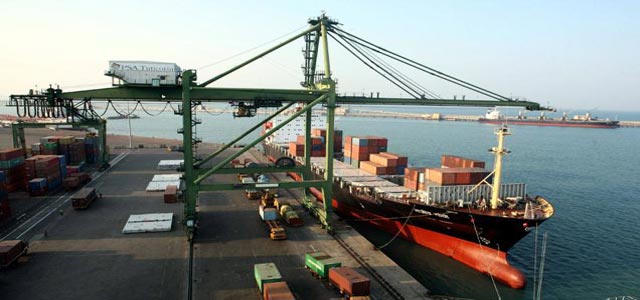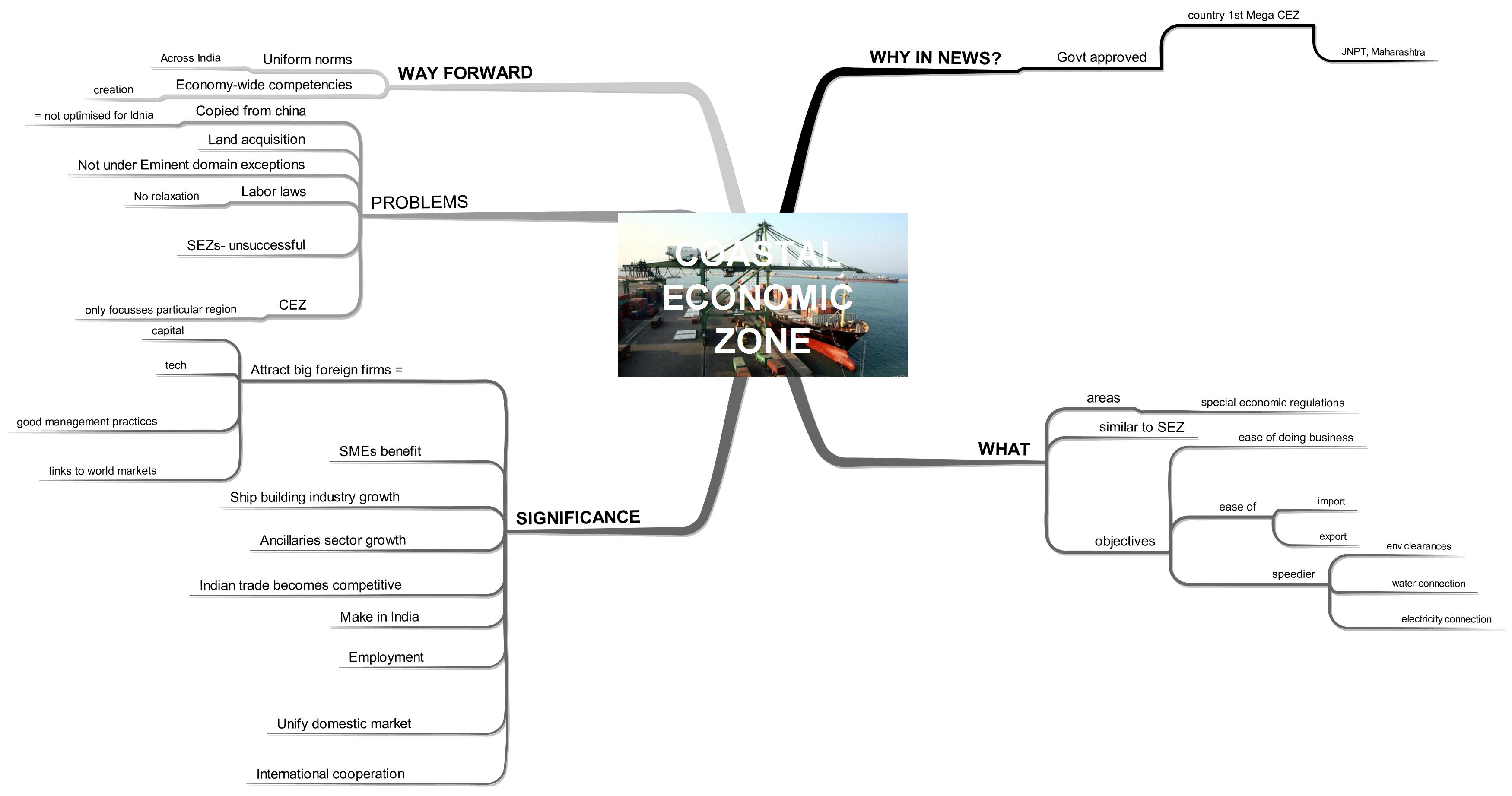Coastal Economic Zone (CEZ)

From Current Affairs Notes for UPSC » Editorials & In-depths » This topic
IAS EXPRESS Vs UPSC Prelims 2024: 85+ questions reflected
Why in News?
In November 2017, Union Government approved the establishment of country’s first mega coastal economic zone (CEZ) consists of 14 CEZs at Jawaharlal Nehru Port (JNPT) in Maharashtra.
It will be the first of its kind initiative stretching along north Konkan region spread across Mumbai, Thane, Pune, Nashik, and Raigad.
What is Coastal Economic Zone? (characteristics)
- Coastal Economic Zone (CEZ) refers to designated coastal areas with special economic regulations such as tax incentives and lower tariffs to make it friendly for foreign direct investment.
- It is similar to Special Economic Zone (SEZ) but focusses on coastal development projects such as the development of port-proximate industrial clusters, promoting port-led development, reduction of logistics cost and time for movement of goods.
- It consists of a group of coastal districts or districts with strong linkage to ports in the region to utilize the synergies with planned industrial corridor projects.
- CEZs are expected to provide strong business-friendly ecosystems such as ease of doing business, ease of exporting and importing, speedier environmental clearances, water, and electricity connections.
- CEZ will be developed as part of the plan for developing 14 such industrial clusters to promote manufacturing and generate jobs.
- The plan envisages a total investment of Rs 15,000 crore in first phase and creation of more than 1.5 lakh jobs.
Also Read: Artificial Leaf – The next big thing in the fight against climate change
What is the need for/significance of CEZs?
- The idea is to attract large firms interested in serving export markets as they will bring with them capital, technology, good management practices and links to world markets. This, in turn, will help create an ecosystem around them in which productive small and medium firms will emerge and flourish.
- Globally, the shipbuilding market is dominated by China, Korea, and Japan, which together account for 90% of the world’s shipbuilding capacity. However, India accounts for only 0.45% even though it has large potential.
- The coastal location allows companies to operate in the world markets unhindered by the poor infrastructure in the hinterland. This was successfully done in China.
- It can provide Rs 5000 crore worth of ancillaries market for the maritime cluster which can serve as a huge opportunity for the Indian economy with engineering, fabrication, and machining offering the greatest potential by 2025.
- The competitive location of these CEZs will help reduce logistics costs, thus enabling Indian trade to be more competitive globally.
- It can promote manufacturing and industrialization under the Make in India initiative of the Government of India as it taps synergies from the industrial corridors.
- It will create employment opportunities by linking the dynamic industrial and urban clusters with areas that are lagging in development.
- It can help unify the large domestic market.
- It will integrate Indian economy with the dynamic global value chains which will contribute greatly to the development and strengthen international cooperation as well.
Also Read: The Data Protection Bill – Critical Analysis
What are the disadvantages/potential challenges for CEZs?
- The CEZ model is based on the Chinese development model which is politically and socially different from India and therefore not an optimized solution for India.
- Sagarmala project which is based on CEZ seems to be suffering from chronic land acquisition problems. Several projects have hit roadblocks either on account of high prices or limited land availability.
- Investors are cautious of investing in CEZs because they do not attract the provisions of “Eminent Domain” which provides for exceptions from the requirement of prior consent to 13 sectors including railways and coal-bearing tracts.
- The feasibility of these economic models for infrastructure projects is uncertain without tax concessions and relaxations in labor laws that investor community expects.
- The new proposals have ignored the experience of Special Economic Zones (SEZs) and the new anti-globalization climate in export markets. SEZs haven’t been successful due to the following problems and CEZs will also face similar problems.
- Over 25,000 hectares of land lying unutilised in these preferential treatment industrial enclaves,
- Lack of flexibility to utilise land for different sectors,
- multiple models of operation,
- Domestic sales by the SEZs facing a disadvantage due to payment of full customs duty, and
- Lack of support from state governments for an effective single-window system.
- CEZ only focusses on development of particular locations. There is no reason why the entire country cannot have robust infrastructure, functional and speedy administration and sensible taxation.
Way forward
- Instead of focussing on area specific rules and tax concessions, the government should focus on uniform norms to promote manufacturing in India.
- The government should focus on economy-wide competencies to raise the manufacturing sector’s share in the economy and must promote Make in India initiative throughout the country uniformly.
If you like this post, please share your feedback in the comments section below so that we will upload more posts like this.


